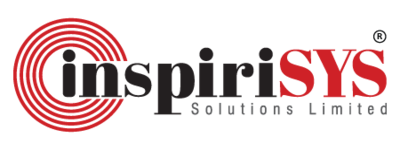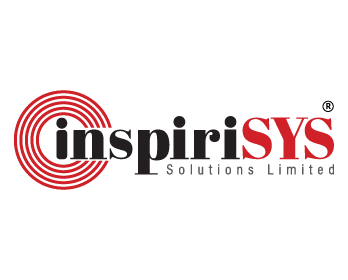What is Application Containerization?
Application containerization involves running applications in isolated environments known as containers. Each container packages an application’s code along with its necessary components—such as libraries, configuration files, and dependencies—into a single, portable unit. This ensures consistent and reliable operation across various computing environments, including physical servers, virtual machines, or cloud infrastructure.
This approach simplifies development and deployment by compartmentalizing applications into manageable, scalable units. Containers are particularly advantageous for cloud computing, where they reduce resource consumption and facilitate faster testing and deployment. Moreover, containerization significantly lowers IT and hosting costs by maximizing resource efficiency. Beyond efficiency, it’s a strategic tool for supporting microservices, enabling seamless software testing, and managing distributed applications.
Key Takeaways
- Containerization enhances application deployment by using lightweight, isolated containers that share the host OS kernel.
- Application containers are ideal for microservices architectures, while system containers are better suited for legacy, monolithic applications.
- Understanding the difference between containerization versus virtualization is essential for optimizing modern IT infrastructure.
How is Application Containerization Used?
In large organizations, traditional monolithic architectures often result in slow deployment cycles and complex updates. Containerization addresses these challenges by breaking down tighter coupled applications into smaller, independent components. Each microservice runs in its own container, encapsulating everything it needs to function independently, which enhances flexibility and reduces dependency on the underlying hardware.
Containers offer robust isolation, so issues in one container, it doesn’t affect the others. This isolation speeds up problem resolution and boosts operational efficiency by allowing developers to focus on individual components without compromising the system’s overall stability. Automation tools like Kubernetes facilitate a "click and deploy" process, enabling speedy deployment and integration of updates, which accelerates development cycles and optimizes resource usage. This agility helps organizations quickly adapt to changing demands and maintain a competitive edge in evolving technological domains.
Benefits of Application Containerization
Let us now explore the key benefits of application containerization and how it reshapes the management and deployment of applications.
- Portability: Containers are platform-independent and can be seamlessly moved and deployed across different cloud providers, giving businesses the flexibility to choose the best infrastructure without being tied to a single vendor.
- Lower Resource Usage: Containers consume fewer system resources compared to virtual machines since they don’t need a full operating system to run. This efficiency translates to reduced IT and hosting costs.
- Automation-Friendly: Containerized environments can be easily automated using orchestration tools like Kubernetes, Docker Swarm, and OpenShift. These platforms streamline deployment, scaling and management of applications across cloud platforms like Google Cloud, AWS, and Microsoft Azure.
- Adaptability: Containers can scale rapidly based on traffic patterns, allowing applications to maintain performance during peak loads and reduce resources use during shorter periods.
- Security: Each container is isolated from others, meaning that if one container encounters a security breach or failure, it won’t affect the rest of the application.
These benefits position application containerization as a transformative solution, allowing businesses to flourish across various platforms.
Tools for Managing Containerized Applications
Deploying and managing containers at scale is easier with the right tools. These platforms automate deployment, scaling, and management across clusters. Here are some of the most popular containerization tools:
- Docker
Docker is a leading platform for creating and running containers, allowing developers to package applications with all dependencies to ensure consistent performance across various environments.
- Kubernetes
Kubernetes simplifies container management by automating deployment, scaling, and operations across clusters, making it ideal for managing complex, distributed applications.
- Amazon ECS
Amazon ECS is a fully managed container orchestration service from AWS that streamlines the deployment, scaling, and management of containerized applications.
Virtualization and Containerization: Understanding the Differences
Virtualization and Containerization both optimize computer resources but operate differently.
Virtualization involves creating virtual instances of physical hardware. Each virtual machine (VM) runs its own operating system and is managed by a hypervisor, which allocates system resources across multiple VMs running on a single physical server.
Containerization, however, is a lighter approach. Containers share the host operating system’s OS kernel, integrating applications and their dependencies. This makes containers smaller, quicker to deploy, and more efficient than VMs.
While virtualization is ideal for running multiple operating systems on a single host, containerization is better for cloud-native environments and microservices architecture, offering greater scalability and portability.
In a nutshell…
| Aspect | Virtualization | Containerization |
|---|---|---|
| Isolation | Each VM runs its own guest operating system. | Containers share the host operating system kernel but remain isolated from each other. |
| Resource Usage | Requires a full OS for each VM, consuming more resources | Utilize host resources efficiently due to their lightweight nature. |
| Performance | May have higher overhead due to multiple OS instances | Lower overhead as containers share the host OS kernel |
| Portability | VMs are less portable due to different guest OS | Offer seamless portability between environments. |
| Deployment Speed | Slower deployment times due to full OS boot process | Faster deployment times as containers start quickly |
| Resource Utilization | Consumes more resources as each VM has its own OS | More efficient resource utilization with containerization |
| Ecosystem | Mature ecosystem with various hypervisors and tools | A growing ecosystem with tools like Docker and Kubernetes |
| Use Cases | Ideal for running multiple applications on a single host | Ideal for microservices architectures and cloud-native applications |
Key Terms
Hypervisor
Software that enables multiple VMs to share the resources of a single physical machine by managing their allocation.
Docker
A leading open-source platform for creating, running, and managing containers.
Kubernetes
An orchestration tool for scaling and managing containerized applications across clusters of hosts.

